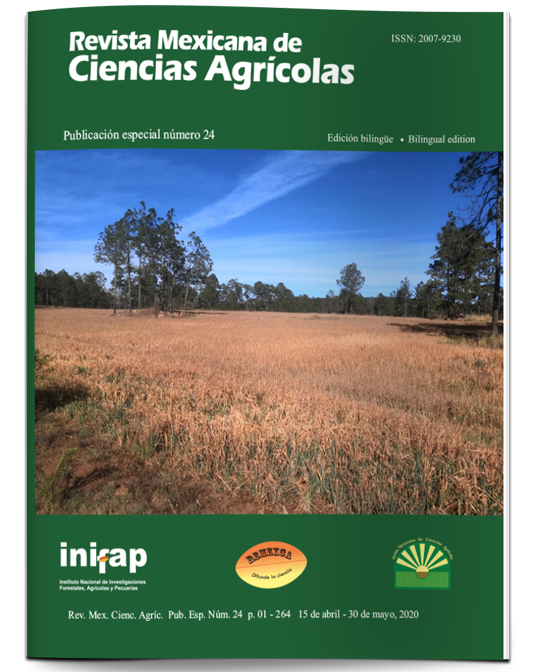Productive behavior and quality of hybrid pastures of Urochloa and star grass grazing with cattle
DOI:
https://doi.org/10.29312/remexca.v0i24.2356Keywords:
frequencies and intensities grazing, quality, tropical grassesAbstract
In tropical areas grasses are the main source of food for ruminants, however, environmental conditions and the management of grasslands directly affect their performance and quality. The objective was to study the effect of the performance of the hybrid pastures of Urochloa and star grass (Cynodon plectostachyus) at different frequencies and grazing intensities, with cattle in the dry tropics. Cobra, Mulato II and Cayman (Urochloa) and star grass grasses were evaluated at cut frequencies of 28 and 35 d, and severe and light intensities of 10 and 15 cm, respectively, which were randomly distributed in a block design randomly with 2 x 2 factorial arrangement with three repetitions. Management effect was observed in the accumulation of DM, the accumulation being higher at a lower frequency and light grazing intensity regardless of the grass evaluated. Cobra, Cayman and Mulato II grass obtained the highest frequency yield at 35 light intensity with an average of 6 679 kg DM ha-1 while, in that handling the star grass obtained the lowest yield with 4 028 kg DM ha-1. The highest crude protein in leaf, in all pastures was found in severe grazing and intensity at 28 d with 20, 20, 18 and 10% in Cobra, Mulato II, Cayman and star grass, respectively (p< 0.05). It is concluded that the highest forage production was obtained by harvesting at a light intensity of 15 cm, every 35 d and the highest protein content was reached when the forage was harvested at an intensity of 10 cm and a frequency of 28 d.
Downloads
Downloads
Published
How to Cite
Issue
Section
License
The authors who publish in Revista Mexicana de Ciencias Agrícolas accept the following conditions:
In accordance with copyright laws, Revista Mexicana de Ciencias Agrícolas recognizes and respects the authors’ moral right and ownership of property rights which will be transferred to the journal for dissemination in open access. Invariably, all the authors have to sign a letter of transfer of property rights and of originality of the article to Instituto Nacional de Investigaciones Forestales, Agrícolas y Pecuarias (INIFAP) [National Institute of Forestry, Agricultural and Livestock Research]. The author(s) must pay a fee for the reception of articles before proceeding to editorial review.
All the texts published by Revista Mexicana de Ciencias Agrícolas —with no exception— are distributed under a Creative Commons License Attribution-NonCommercial 4.0 International (CC BY-NC 4.0), which allows third parties to use the publication as long as the work’s authorship and its first publication in this journal are mentioned.
The author(s) can enter into independent and additional contractual agreements for the nonexclusive distribution of the version of the article published in Revista Mexicana de Ciencias Agrícolas (for example include it into an institutional repository or publish it in a book) as long as it is clearly and explicitly indicated that the work was published for the first time in Revista Mexicana de Ciencias Agrícolas.
For all the above, the authors shall send the Letter-transfer of Property Rights for the first publication duly filled in and signed by the author(s). This form must be sent as a PDF file to: revista_atm@yahoo.com.mx; cienciasagricola@inifap.gob.mx; remexca2017@gmail.
This work is licensed under a Creative Commons Attribution-Noncommercial 4.0 International license.



